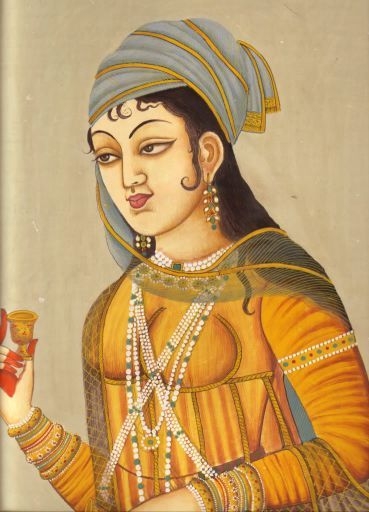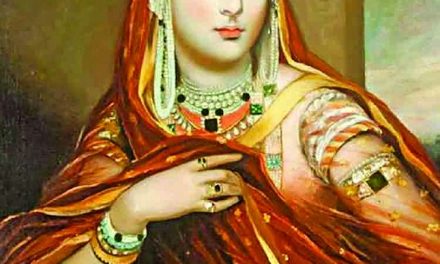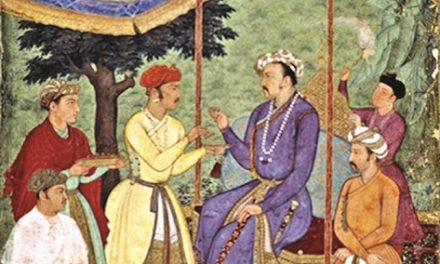
The tragic story of Anarkali and Mughal Emperor Jahangir (Salim), as depicted in the famous 1960 film ‘Mughal-e-Azam’, has always been one of passionate romance and mystery. According to the legend and movie, Prince Salim was head over heels for the beautiful Mughal courtesan, Anarkali and upon learning this, Akbar got furious and ordered Anarkali to be buried alive. The movie, however, chose a different, less tragic, ending where Akbar is benevolent and allows Anarkali to escape her death through a secret route.
Originally, it was folklore, popular among people and verbally travelled through generations, with no evidence of the truth. Over time questions began to arise about the authenticity of her character in the life of the Mughal Emperor- was she really condemned to death because of her affair with the emperor’s beloved son? The truth is yet to be revealed. Through progress in research and changes in perspectives, some information has been unveiled about the credibility of this story.
All the great emperors have documented their life in their books. Akbar had his Akbarnama, written by his confidant Abul Fazl and Jahangir wrote his own stories in his Jahangirnama. These books hold records of all the events that took place in the lives of these important people; from the most trivial facts like Jahangir bathing his elephants in warm water during winter to the great battles for succession. Thus, it is shocking that none of these books has any mention of the heir apparent’s interest in the court dancer.
To unravel the origin of this myth, we must go back to the 16th century Lahore. In the heart of the city dwells Anarkali Bazaar, which was named after the famous mausoleum thought to be the tomb of the courtesan Anarkali. The epitaph on the structure shows two dates- 1008 Hijri(1599 AD) and 1025 Hijri(1615 AD) along with a couplet by the prince himself with his name engraved below it. The inscription is in Persian which translates to:
“Ah! If I could behold the face of my beloved once more
I would thank my God until the day of resurrection”
These lines clearly represent the emotions of the lovestruck prince for his beloved.
Born in Iran as Sharif-un-Nissa or Nadira Begum first came to Lahore through a trader’s caravan. Her beauty and charm easily got her access to the Mughal court where she was endowed with the name Anarkali which meant “pomegranate blossom” in Urdu. It does not come as a surprise that the prince fell in love with her, yet no recollection of her existence is present in the history documented by the prince or other contemporary historians.
About 10 years after her death, British trader William Finch visited Lahore and that is when Anarkali was first mentioned in his travelogue. The description given by Finch is much different from the legend where he says Anarkali was one of Akbar’s wives and the mother of his son Prince Daniyal. Apparently, Akbar was suspicious of the incestuous relationship between the crowned prince and his wife and condemned her to death out of wrath. She was buried alive between the walls of the Lahore Fort and Jahangir upon his accession constructed the splendid tomb in memory of the beautiful concubine. French historian Alain Desouriles traced the origin of this version explaining in his research paper “Historical Fiction and Style: The Case Of Anarkali”, that English travellers like William Finch, Edward Terry and Bishop Herbert wrote of supposed incidents which they heard from locals in Lahore. This version is actually untrue as historically, the mother of Prince Daniyal died three years before the incident of Anarkali.
During the Mughal era falling in love with women from the harem of concubines was not something tabooed. It was in fact a very common scenario as most of these women who lived in harems were either the wives of the emperor or relatives of some form. Even if Emperor Akbar was against it, the brutal and unique story of the Anarkali’s death must have had some part to play in his Akbarnama, which consists of all his life decisions. Henry Beveridge, the translator of the Akbarnama, stated that an incident of Akbar being against a love interest of Prince Salim was mentioned in the book, however, it was the marriage proposal of the prince with Zain Khan Koka’s daughter Khas Mahal. The reason Akbar was displeased was that Prince Salim had already been married to Sahib Jamal, who was a cousin of Zain Khan, which would make Khas Mahal his niece. His father’s objection deeply affected the Prince and upon seeing that, Akbar eventually gave his consent for the marriage. No other refusal or conflict was mentioned regarding the prince’s marriage in the book.
Yes, Anarkali bazaar has come up several times during the course of Mughal history but none of then trace back to the death or tomb of Anarkali. Dara Shikoh, son of Shahjahan, is said to have visited the place frequently to seek advice from a Sufi saint but he did not acknowledge any story regarding Anarkali either. All these ideas eventually point towards the same question- Is the story of Anarkali and Prince Salim just a myth that verbally spread throughout centuries?
18th-century historians Abdullah Chagati and Muhammad Baqir, after thorough research on the past and present of Lahore, explained that the area where the tomb of Anarkali is located was originally a pomegranate garden named “Baagh Anarkali” where an unnamed tomb was previously situated. Over time, elaborate stories around the tomb were created by hearsay and no evidence.
There are a few factors that provoked the authenticity of this mystery. Desouriles believed that the myth became popular after the Indian Rebellion of 1857. The Victorians promoted this story as it was an ideal depiction of the brutal Mughal rule which fit well with the British imperial ideology. Many stories that got highlighted during that time was somewhat a result of British propaganda that left a negative impact on the Mughal system and put the “kind and benevolent” British rule on a higher pedestal. They tried their level best to cover up their brutality and tyranny by accusing Mughals of crimes they did not commit.
Later, 20th-century dramas and movies like “Anarkali: Love of a Moghul Prince” and “Mughal-e-Azam” brought life to the legendary characters’ love story. As their work was brought under the spotlight and reached top charts, the line between reality and myth started getting blurred. With more media coverage, more people became curious about the origin of this story.
As of now, we can confidently say that Anarkali never existed and her life was just a story that travelled through centuries to feed intriguing minds. Whether it is a fact or a fiction- we hope this article will answer our questions.




